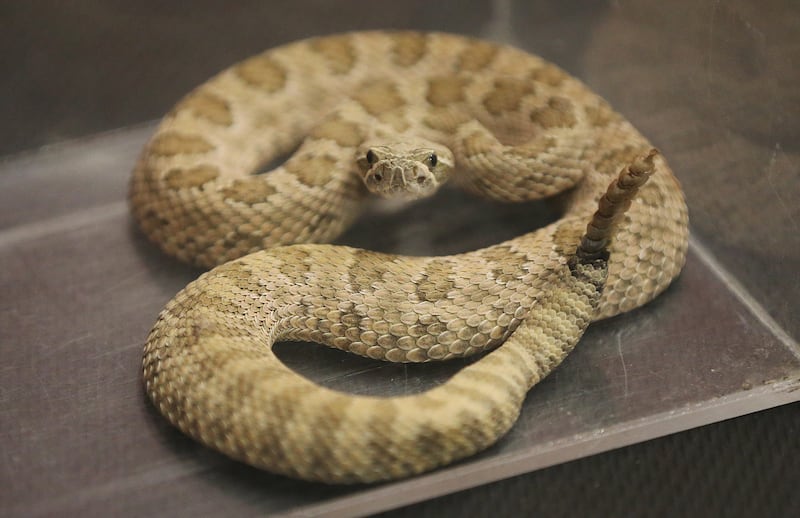Tales of the Old West, with its legendary outlaws and larger-than-life characters, are part of the Western mystique. So too are stories of the creatures that live here. Rattlesnakes have always played an iconic role in the mythology of Western lore and are featured in virtually every Western movie ever made — always as the villain. But those depictions are based on misplaced fear and loathing, not on fact and understanding.
In truth, rattlesnakes are just like every other creature; they have an important role to play in nature’s grand plan. They are not malevolent, evil or scheming. Those are human traits. And they most certainly are not “out to get us” as some people believe. Despite what your Uncle Bob says, a snake will never chase you.
Utah residents should be glad to know that rattlesnakes want nothing to do with humans, and if they weren’t venomous, we might not give them a second thought. Biases based on archaic legends or sensationalistic sources like movies don’t stand up to scientific scrutiny and have no merit, because in real life, snakes are the good guys, which is why they are protected by law.
Snakes don’t need people, but people need snakes. Snakes made it possible for us to advance from nomadic tribes to established agrarian societies by preventing the destruction of food crops by vermin, thereby enabling the stabilization and progression of human civilization.
Modern farmers have learned to appreciate snakes as a form of free rodent control, compliments of Mother Nature. If snakes were to disappear tomorrow, it would only be a short time before our crops and grain silos were ravaged by rodents.
As prolific vectors for disease, rodents are carriers of numerous pathogens including plague, tularemia, hantavirus, tick-borne encephalitis, Lyme disease and a host of other serious and potentially fatal diseases. If you have never suffered from any of these maladies, you should probably thank a snake.
Civilization has invaded the habitats of numerous wild creatures, including rattlesnakes. Since neither of our species is going anywhere, rattlesnake encounters will always be inevitable, and we need to learn to get along. It’s important to remember that the snake that rattles at you when you’re hiking isn’t being aggressive, threatening or mean; he’s just letting you know he’s there. For this reason, rattlers have been called “the most polite of all snakes.” People who don’t like snakes should appreciate this courtesy.
But while snake encounters are common, there’s no reason to be afraid. In most Western states, the only venomous snakes are rattlesnakes, making identification a breeze. (Arizona and New Mexico also have the western coral snake.) Utah has 31 total snake species, but only seven rattlesnake species are venomous, and only one of them, the Great Basin rattler, lives along the Wasatch Front. The other 24 species are completely harmless to humans, and even rattlesnakes aren’t dangerous if people would simply leave them alone.
A harmless snake in your yard, such as a garter snake, gopher snake or racer, is an invaluable source of natural pest control. Once he eliminates the pests in your yard, he’ll move on with no prompting from you. Best of all, he won’t send you a bill.
Most states, including Utah, have laws prohibiting the killing of rattlesnakes and other herpetofauna, which includes all reptiles and amphibians. Why? Because these animals are important members of the biotic communities in which they live, filling dual roles as both predator and prey.
In an enlightened age, it’s time to stop demonizing snakes and start seeing them as the valuable and vulnerable creatures they are, and to understand that the only good snake is a live snake.
David E. Jensen is a freelance writer, educator, and owner of Wasatch Snake Removal in Salt Lake City, Utah. He has never met a snake he didn’t like.

